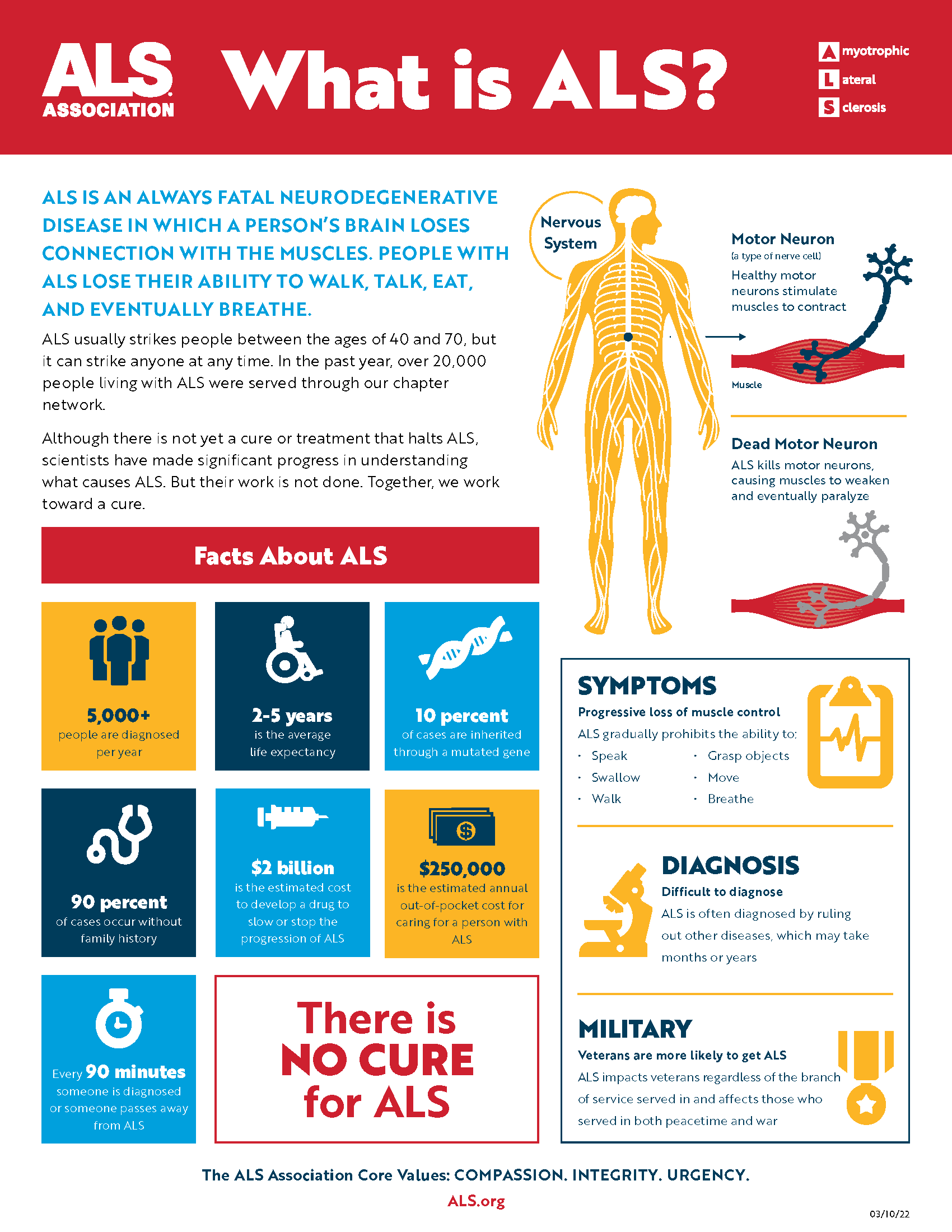ALS, or amyotrophic lateral sclerosis, is a progressive neurodegenerative disease that affects nerve cells in the brain and spinal cord. Unfortunately, ALS is always fatal. There is no cure for ALS yet.
Motor neurons reach from the brain to the spinal cord and from the spinal cord to the muscles throughout the body. The progressive degeneration of the motor neurons in ALS eventually leads to their demise.
When the motor neurons die, the ability of the brain to initiate and control muscle movement is lost. When voluntary muscle action is progressively affected, people may lose the ability to speak, eat, move and breathe.
The motor nerves affected when you have ALS are the motor neurons that provide voluntary movements and muscle control. Examples of voluntary movements are making the effort to reach for a smartphone or step off a curb. These actions are controlled by the muscles in the arms and legs.
Studies to develop more treatments and a cure for ALS, many funded by The ALS Association, are ongoing around the world. Scientists have made significant progress in understanding how the disease works, identifying biological indicators that can help diagnose and treat the disease, and learning ways to prevent cases of ALS. Learn more about ALS research.


